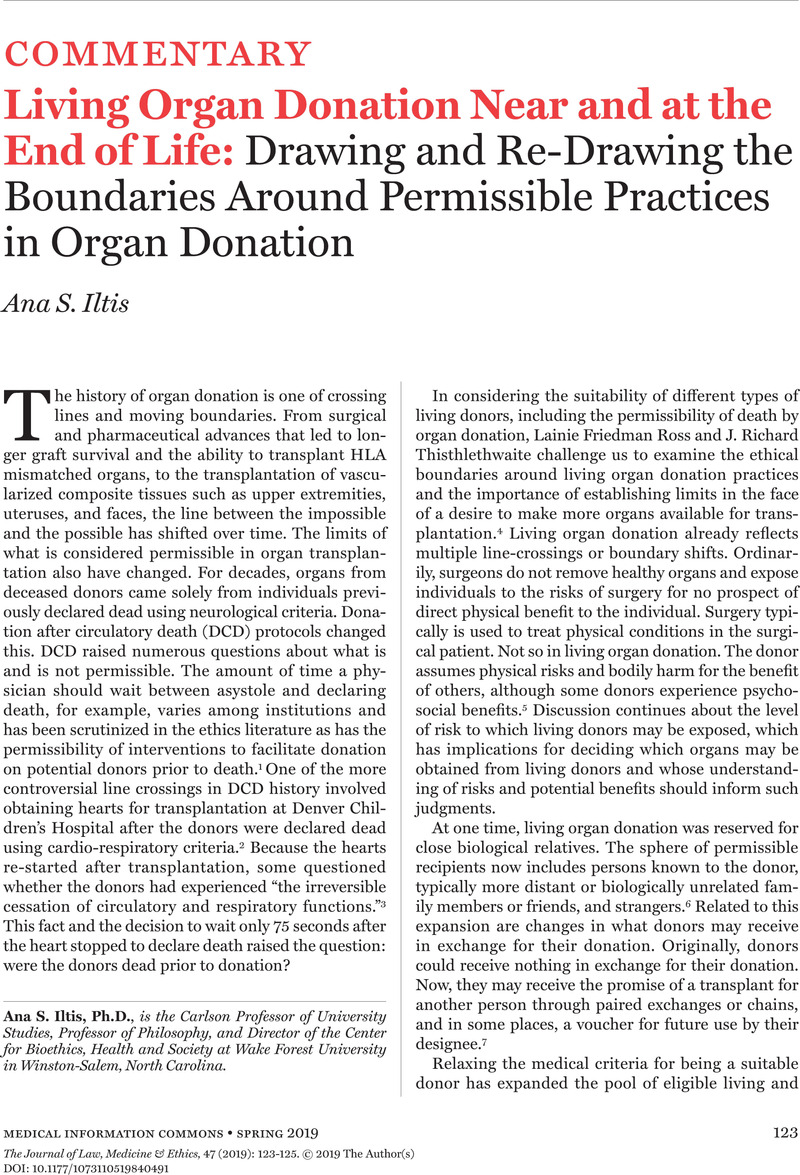Crossref Citations
This article has been cited by the following publications. This list is generated based on data provided by Crossref.
Iltis, Ana
2022.
Heads, Bodies, Brains, and Selves: Personal Identity and the Ethics of Whole-Body Transplantation.
The Journal of Medicine and Philosophy: A Forum for Bioethics and Philosophy of Medicine,
Vol. 47,
Issue. 2,
p.
257.



